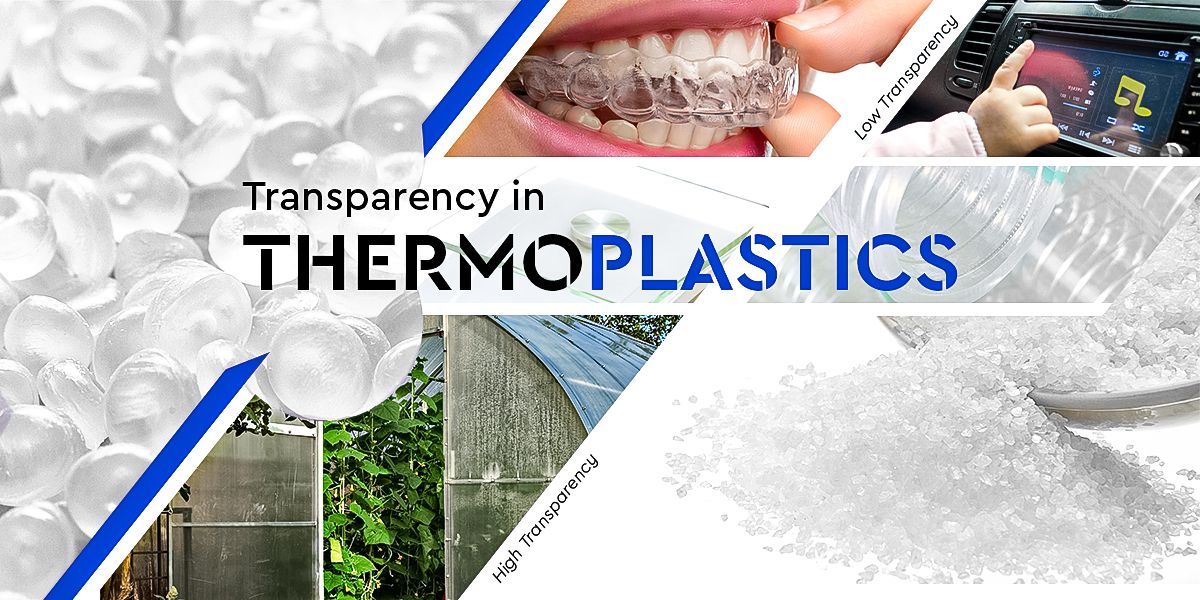In this article, we’ll explore high transparency thermoplastics, compare them with commonly used opaque alternatives, and discuss the factors that influence transparency, all while keeping the local market in mind.
What Are Transparent Thermoplastics?
Transparent thermoplastics allow light to pass through with minimal scattering, making them ideal for products where visibility is important. These materials are commonly used for packaging, medical devices, and automotive parts in regions such as East and West Africa, where demand for clear, durable plastics is growing.

Thermoplastics with High Transparency
Several thermoplastics are engineered to provide exceptional transparency. Some of the most common high-transparency thermoplastics include:
- Polycarbonate (PC): Polycarbonate is known for its high impact resistance and optical clarity. It’s widely used in applications such as safety lenses and electronic covers in countries like Kenya and Nigeria, where durability and clarity are key.
- Polymethyl Methacrylate (PMMA): Also called acrylic or Perspex, PMMA is highly transparent and ideal for signage, windows, and display panels. It’s increasingly being used in the packaging sector across East Africa, where clear packaging is in demand for consumer goods.
- Polyethylene Terephthalate Glycol (PETG): PETG is transparent, durable, and resistant to chemicals, making it a popular choice for medical packaging and consumer goods in countries like South Africa and Nigeria.
Common Thermoplastics with Lower Transparency
While some thermoplastics are engineered for transparency, many are naturally opaque or semi-opaque. These materials are ideal for products where clarity is not a priority. Examples include:
- Polyvinyl Chloride (PVC): Rigid PVC is mostly opaque but can be made transparent in thin films. It’s commonly used for plumbing pipes and window profiles in regions like Ghana and Uganda, where cost-effective and durable materials are essential.
- Polypropylene (PP): While polypropylene can be transparent in thin forms, it is generally opaque. This material is widely used in packaging, automotive parts, and consumer goods across West Africa, especially for items that don’t require visibility.
- Acrylonitrile Butadiene Styrene (ABS): ABS is a durable, opaque thermoplastic used for electrical components and toys. Its strength makes it a popular choice in manufacturing hubs like Nigeria.
Factors That Influence Thermoplastic Opacity
Several factors influence the transparency or opacity of thermoplastics, which can be adjusted depending on the application. Key factors include:
- Molecular Structure: Thermoplastics with an amorphous structure (random molecular arrangement) tend to be more transparent, while those with crystalline structures tend to scatter light and appear opaquer.
- Additives and Fillers: The addition of colorants, UV stabilizers, or fillers can reduce transparency. This is particularly relevant in the local market, where UV protection is often required in packaging materials due to the strong sunlight in regions like East Africa.
- Thickness of the Material: As the thickness of a thermoplastic increases, it tends to become opaquer. This is important to consider when designing packaging or safety products in regions with varying temperature and climate conditions.
- Processing Methods: The way the material is processed, such as injection molding or extrusion, can impact its final transparency. In regions with large-scale manufacturing, like South Africa, these methods are key in controlling product clarity.
Measuring Polymer Opacities
To evaluate the transparency of thermoplastics, manufacturers use various techniques:
- Light Transmission: This method measures the amount of light that passes through the material. The clearer the plastic, the higher the light transmission percentage.
- Haze Measurement: Haze refers to the scattering of light within the plastic. A low haze value means the material is highly transparent, which is essential for products requiring clear visibility, such as packaging and displays.
- Opacity Index: This index measures how much light is blocked by the material, providing insight into its degree of opacity, useful for applications that require opaque materials.
Conclusion
In the growing markets of East Africa, West Africa, and South Africa, selecting the right thermoplastic material is crucial for product performance and consumer appeal. Transparent thermoplastics like polycarbonate, PMMA, and PETG are ideal for applications requiring clarity, while PVC, polypropylene, and ABS are often used for products where transparency isn’t a priority. By understanding the factors that influence opacity, businesses can optimize their material choices for their specific needs, ensuring cost-effectiveness and quality.

